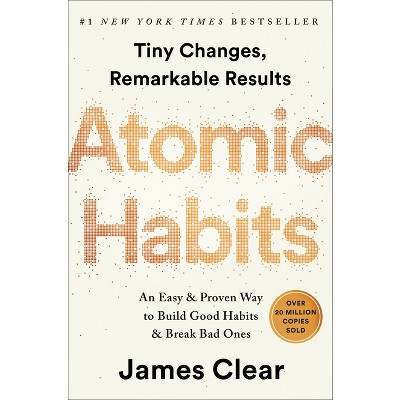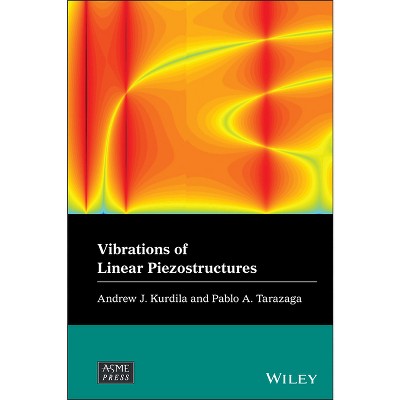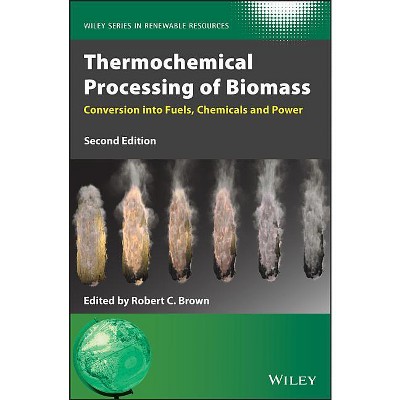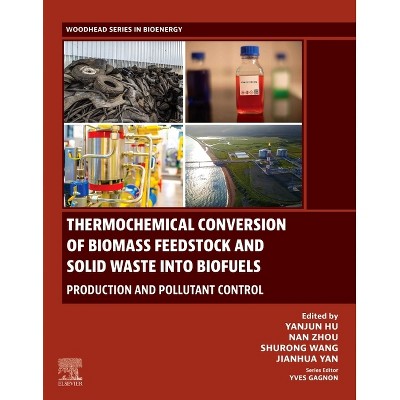Voltage-Enhanced Processing of Biomass and Biochar - (Wiley-Asme Press) by Gerardo Diaz (Hardcover)

About this item
Highlights
- Voltage-Enhanced Processing of Biomass and Biochar A detailed introduction to voltage-enhanced processing of carbonaceous materials While there are many well-established biomass processing techniques that are suitable for a variety of different situations, the utilization of voltage-driven techniques for the processing of biomass and biochar has been shown to have advantages for certain applications.
- About the Author: Gerardo Diaz, PhD, is a Professor of Mechanical Engineering and Director of the Sustainable Plasma Gasification Lab at the University of California at Merced.
- 176 Pages
- Science, Energy
- Series Name: Wiley-Asme Press
Description
About the Book
"This book provides an overview of conventional biomass processing techniques as well as a description of technologies that utilize voltages and currents to enhance processing capabilities. The term plasma processing of biomass is usually associated with thermal plasma torches used for gasification of organic material. This book not only describes thermal plasma processing of biomass, but it also presents applications where nonthermal plasma discharges can be utilized in biomass processing plants, and applications where Joule heating of carbonaceous materials can be implemented. The book is intended for senior level undergraduate students and first year graduate students, who might not have a background in plasma, but are familiar with concepts of calculus, differential equations, and numerical algorithms. Chapter 1 provides a description of relevant properties of biomass, biochar, and activated carbon, while Chapter 2 gives a description of conventional methods of processing biomass and biochar. Chapter 3 provides an introduction to plasmas for thermal and nonthermal discharges, and Chapter 4 describes technologies that are suitable for utilizing the effects of applied voltages to enhance biomass processing. As properties of biomass vary after thermochemical decomposition, yielding a material with better electrical properties, Chapter 5 focuses on the analysis of the effects of applying voltages in processing of biochar. Thermal runaway behavior can be obtained with heating rates not achievable by conventional heating techniques. Chapter 6 provides an introduction of numerical simulation of plasmas. Finally, the inherit variability and even chaotic behavior of thermal arcs are analyzed in Chapter 7 in the context of the development of control techniques that can stabilize these discharges"--Book Synopsis
Voltage-Enhanced Processing of Biomass and Biochar
A detailed introduction to voltage-enhanced processing of carbonaceous materials
While there are many well-established biomass processing techniques that are suitable for a variety of different situations, the utilization of voltage-driven techniques for the processing of biomass and biochar has been shown to have advantages for certain applications. Specifically, the field of thermal plasma gasification--where plasma provides the conversion energy--is relied upon in certain commercial equipment that is already available on the market. Crucially, however, the field of non-thermal plasma pyrolysis and gasification--chemical reactions are intensified by the presence of the plasma discharge--is still a developing subject with a great scope for innovation in research and development.
A timely book considering its potential applications in a greener market, Voltage-Enhanced Processing of Biomass and Biochar helpfully provides a detailed description of voltage-enhanced processing of carbonaceous materials. The book explains aspects of this processing method in thermal and non-thermal plasmas, as well as describing the effects of Joule heating as part of the temperature distribution and conversion rate. In many ways, this book presents a detailed description of different processes and plasma discharges currently available, with the provision of experimental and simulation results gathered over years of research and development. Importantly, it also offers many methods by which we can be environmentally friendly when working with biomass and biochar.
Voltage-Enhanced Processing of Biomass and Biochar readers will also find:
- Simulation results of Joule heating of biomass, biochar, and pyrolytic graphite
- Descriptions of thermal plasma torches currently available in the market
- Accounts of the experimental results of conversion utilizing steam plasma
- Comparison of results against provided numerical models that predict synthesis gas composition under the presence of thermal plasma discharge
Voltage-Enhanced Processing of Biomass and Biochar is a useful reference for researchers and practitioners working on applications of plasma for the conversion of biomass and biochar, as well as graduate students studying mechanical, electrical, and chemical engineering.
From the Back Cover
Voltage-Enhanced Processing of Biomass and Biochar
A detailed introduction to voltage-enhanced processing of carbonaceous materials
While there are many well-established biomass processing techniques that are suitable for a variety of different situations, the utilization of voltage-driven techniques for the processing of biomass and biochar has been shown to have advantages for certain applications. Specifically, the field of thermal plasma gasification--where plasma provides the conversion energy--is relied upon in certain commercial equipment that is already available on the market. Crucially, however, the field of non-thermal plasma pyrolysis and gasification--chemical reactions are intensified by the presence of the plasma discharge--is still a developing subject with a great scope for innovation in research and development.
A timely book considering its potential applications in a greener market, Voltage-Enhanced Processing of Biomass and Biochar helpfully provides a detailed description of voltage-enhanced processing of carbonaceous materials. The book explains aspects of this processing method in thermal and non-thermal plasmas, as well as describing the effects of Joule heating as part of the temperature distribution and conversion rate. In many ways, this book presents a detailed description of different processes and plasma discharges currently available, with the provision of experimental and simulation results gathered over years of research and development. Importantly, it also offers many methods by which we can be environmentally friendly when working with biomass and biochar.
Voltage-Enhanced Processing of Biomass and Biochar readers will also find:
- Simulation results of Joule heating of biomass, biochar, and pyrolytic graphite
- Descriptions of thermal plasma torches currently available in the market
- Accounts of the experimental results of conversion utilizing steam plasma
- Comparison of results against provided numerical models that predict synthesis gas composition under the presence of thermal plasma discharge
Voltage-Enhanced Processing of Biomass and Biochar is a useful reference for researchers and practitioners working on applications of plasma for the conversion of biomass and biochar, as well as graduate students studying mechanical, electrical, and chemical engineering.
About the Author
Gerardo Diaz, PhD, is a Professor of Mechanical Engineering and Director of the Sustainable Plasma Gasification Lab at the University of California at Merced. He received his PhD in Mechanical Engineering from the University of Notre Dame in 2000.
Shipping details
Return details
Trending Non-Fiction











